

Wittenberg
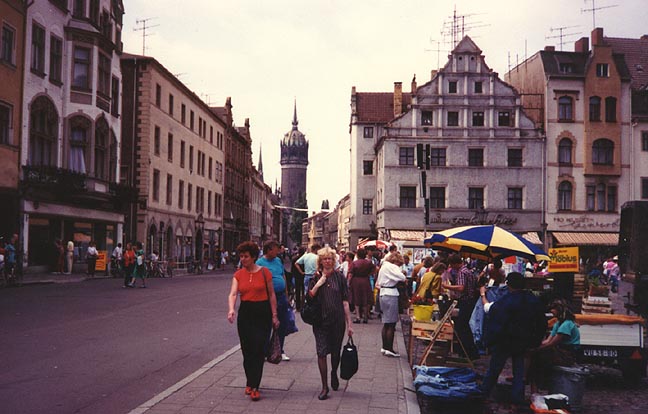
Wittenberg with Castle church tower in background
Wittenberg
, city, east central Germany, in Saxony-Anhalt, on the Elbe River. It is a railroad junction, and factories for the manufacture of textiles, hosiery, leather, machinery, pottery, electrical apparatus, bricks, cement, and chemicals are here.
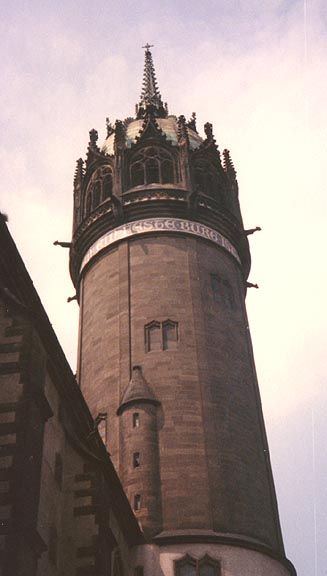
Castle church tower
Wittenberg contains many architectural landmarks associated with the Protestant Reformation. Particularly noteworthy is the Castle Church, on the door of which Martin Luther in 1517 nailed his 95 theses opposing the granting of indulgences.

Castle church door
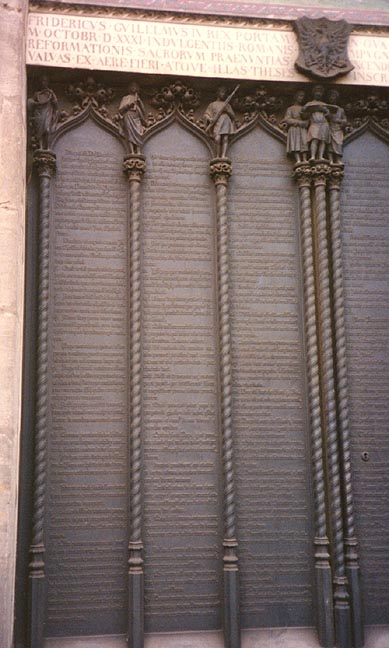
95 theses in bronze
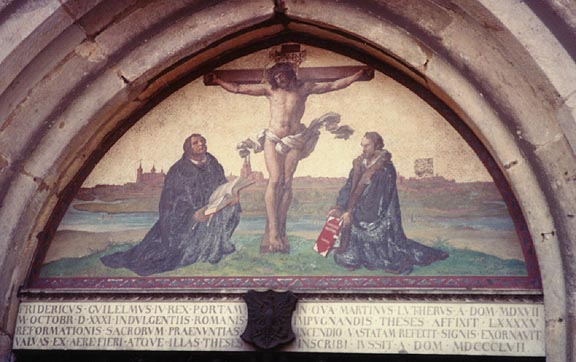
Martin Luther at the cross
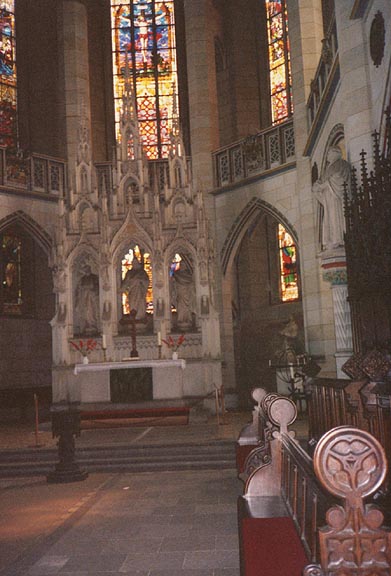
church interior
Within the church are the tombs of Luther and of the German religious reformer Melanchthon.

Luther tomb
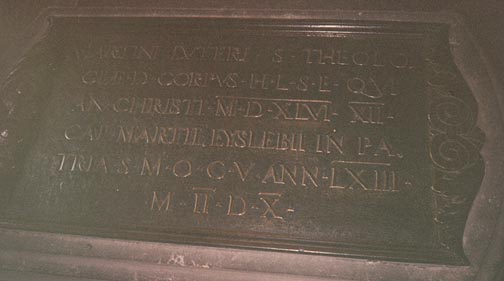
the tomb inscription
Of interest, too, are the home of Luther, now a museum; the houses of Melanchthon and of the German painter and etcher Lucas Cranach the Elder; and the parish church, dating from the 14th century, where Luther preached. Luther, Melanchthon, and the German religious reformer Johann Bugenhagen were all faculty members of the University of Wittenberg (1502), which was merged with the University of Halle in 1817. The spot where Luther burned the papal bull condemning his doctrines is marked by an oak tree.
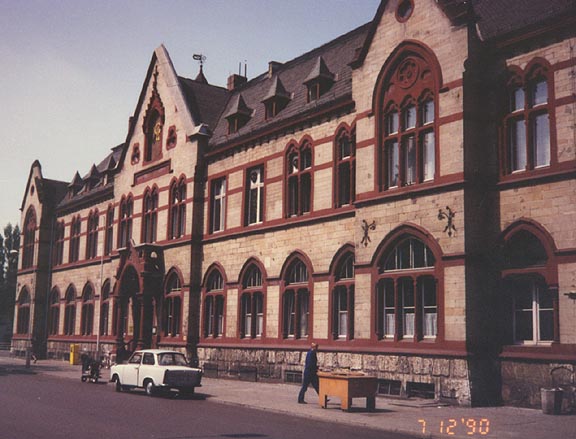
Luther seminary
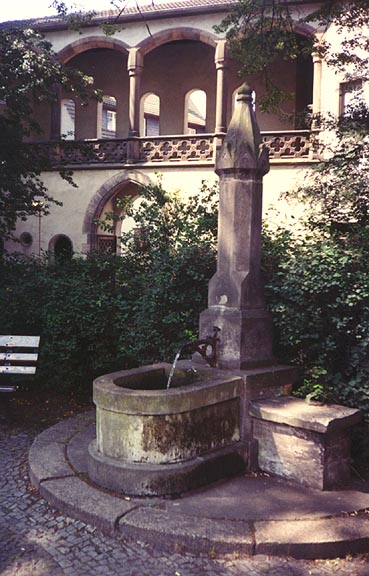
fountain in courtyard of Luther home
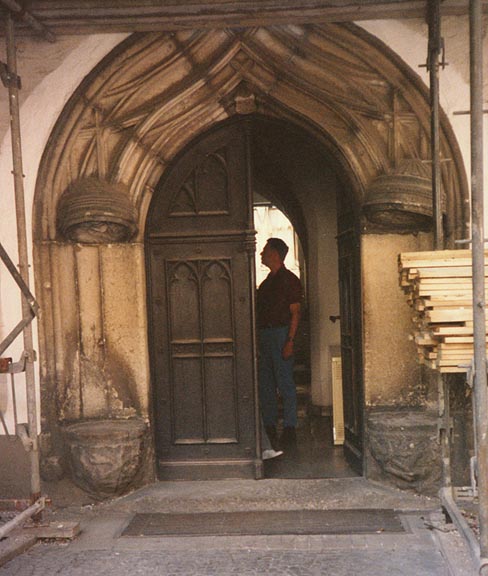
doorway to old residence of
Luther
(being restored 1990)
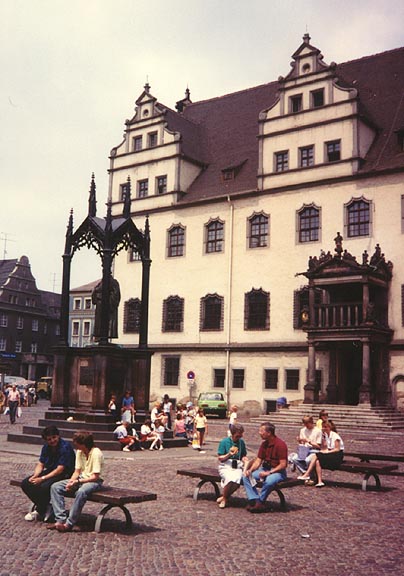
town square
The city sustained heavy damage in the Thirty Years' War (1618-1648) and in the Seven Years' War. Wittenberg, following the deliberations at the Congress of Vienna, was annexed by Prussia in 1815. Population (1992 estimate) 48,400.
Text from Microsoft Encarta

Luther statue
![]()
![]()
![]()